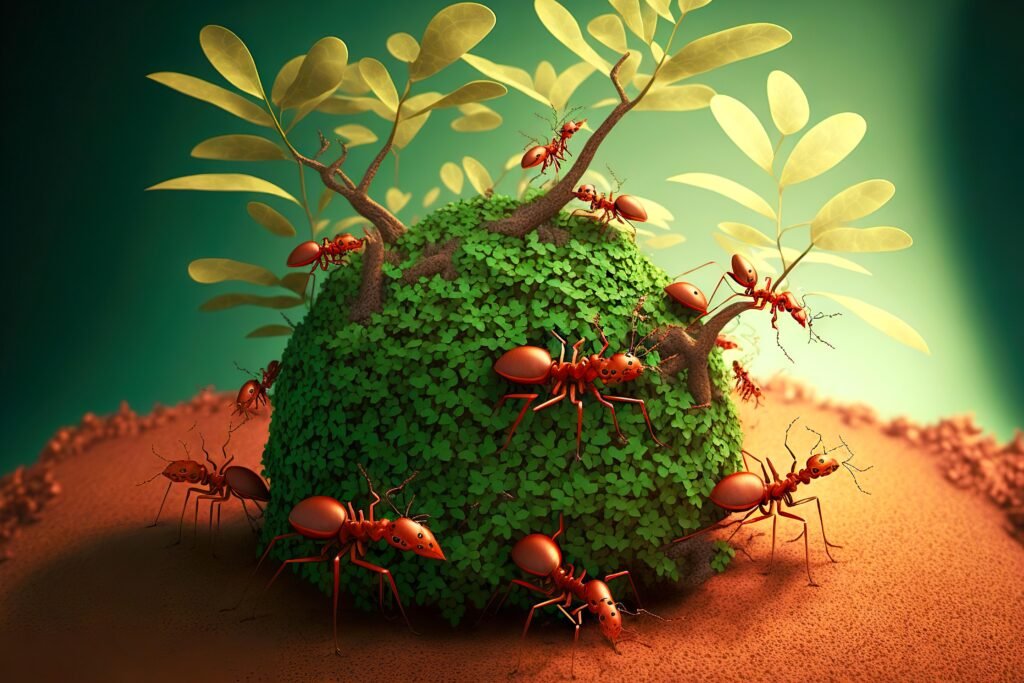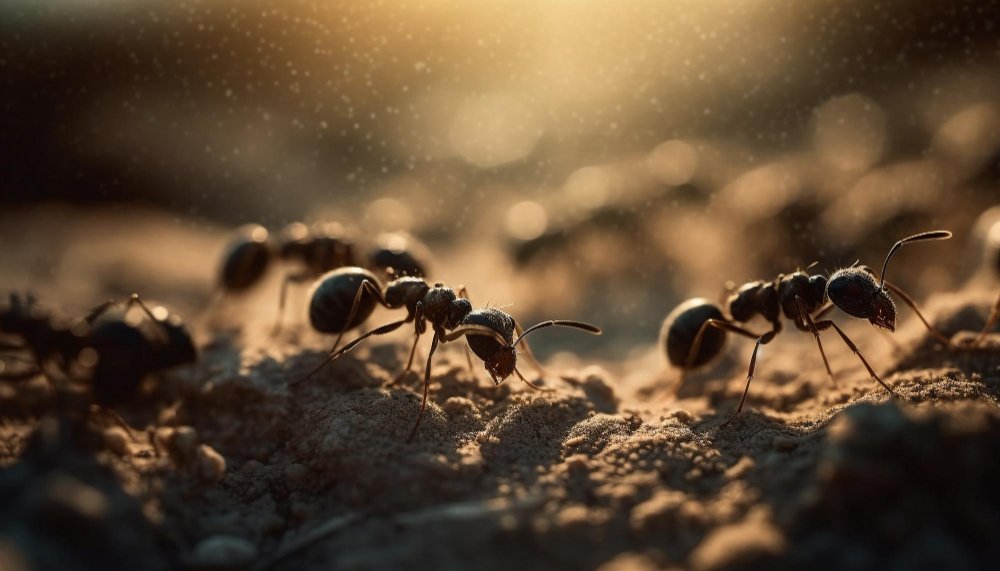
Intro
The ability to identify the top 10 household ants infesting your living space is the first step in effectively controlling them.
This blog post aims to help you distinguish between these common species, understand their behaviors, and offer tips on how to treat them.
Understanding the Fascinating World of Ants

While it’s true that ants can be a significant annoyance when they invade our homes, it’s also important to note their essential role in our environment.
These industrious insects are pivotal in decomposing organic matter and helping to control other pest populations. Despite their contributions outdoors, their uninvited arrival indoors can result in potential health hazards, structural damage, and general unease.
Carpenter Ants: The Wood-Destroying Villains

Let’s shine the spotlight on Carpenter Ants, an infamous species notorious for their destructive habits. They get their moniker from their exceptional ability to carve out wood to create expansive nesting areas.
Interestingly, they don’t consume the wood, but rather remove it to make room for their colonies. Their size is relatively large, with workers varying from ¼ to ½ inch long.
They are typically black or brown in color. In terms of preferred nesting locations, Carpenter Ants have a fondness for moist, decayed wood.
Keep in mind that these wood carving villains can pose a significant threat to your home’s structural integrity if they take up residence inside.
Pavement Ants: The Tiny Troublemakers

Pavement ants, as their name suggests, typically establish their colonies in cracks found in pavements.
These little critters are usually brown or black and are known to infiltrate homes in their quest for sustenance.
Despite their diminutive size, they can create quite a nuisance by contaminating food sources within your home. However, rest assured that they pose no physical harm to humans.
Odorous House Ants: Smelly Uninvited Guests
Identified by their unique rotten coconut-like odor when squashed, odorous house ants make their presence known in an unpleasant way.
These petite invaders often flaunt a brown or black hue, and their typical hangout spots include wall cavities and spaces beneath floors.
Lured by their sweet tooth, these ants can swiftly overrun your kitchen, getting into your food supply and making it unsuitable for consumption.
Argentine Ants: The Super-Colony Builders

Renowned for their ability to form vast supercolonies, Argentine ants are a force to be reckoned with.
Their coloration varies from light to dark brown and their small size can sometimes deceive homeowners about their potential threat.
Exhibiting aggressive behavior towards other ant species, they establish dominance and readily invade living spaces in large numbers.
The motivation behind their intrusion is typically a quest for accessible food and water sources, making your home a prime target.
This propensity to invade in large numbers amplifies the inconvenience faced by homeowners, transforming them into a considerable annoyance.
Fire Ants: The Pain-Inflicting Invaders

Standing out with their reddish-brown color and infamous reputation, fire ants are no ordinary pests. What makes them particularly fearsome is their inclination to deliver painful stings, a characteristic that has earned them their menacing name.
While their natural habitat is the great outdoors, don’t be surprised to find them breaching the confines of your home.
This usually occurs during extreme weather situations or when their existing food and water sources are depleted.
Fire ants’ notorious behavior combined with their ability to adapt to various environments makes them a pest you’ll want to keep a vigilant eye out for.
Pharaoh Ants: The Disease-Spreading Intruders
A standout on our list of the top 10 household ants is the Pharaoh Ant, an ant species infamous for its disease-spreading capabilities.
Sporting a slight frame and a yellow to light brown color, these diminutive invaders have a proclivity for warm, humid environments.
They are a grave concern particularly in healthcare facilities due to their propensity to act as vectors for harmful pathogens.
Though small in size, their impact is anything but. Their love for warmth and moisture makes indoor environments like homes and hospitals particularly attractive to these tiny pests.
This tendency makes them a serious concern not only for the discomfort they cause but also for the health risks they pose.
Thief Ants: The Stealthy Robbers

Meet the Thief Ants, aptly named for their unconventional practice of pilfering food and larvae from neighboring ant colonies.
Their size is relatively small, often marked by a yellow or light brown coloration. These sly insects have a propensity for setting up their nests within voids in your walls.
Their food preference leans towards high protein sources, making your pantry a potential hotspot for these covert intruders.
Despite their sneaky ways, they do not pose a direct threat to human health or safety. However, their presence can lead to unwanted food contamination.
Ghost Ants: The Mysterious Intruders

Meet the elusive Ghost Ants, known for their size so small and color so pale that they seem almost invisible to the naked eye.
These mystical creatures have tropical origins and are predominantly found in areas that offer warmth and humidity.
As for their dietary preferences, they are particularly attracted to sweet substances, making your kitchen and bathroom their preferred destinations for foraging.
Their presence might be difficult to detect due to their near-transparent coloration and tiny size, but a closer inspection might reveal their unexpected residence in your home.
Crazy Ants: The Chaotic Invaders

One might be puzzled at the mention of Crazy Ants, but this peculiar name perfectly fits their character.
Known for their unpredictable and rapid scurrying, these ants tend to perplex homeowners with their seemingly chaotic behavior.
Exhibiting a dark brown to black color, they are rather small in size but mighty in nuisance. An interesting trait of Crazy Ants is their eclectic taste in food; they’re equally drawn to both sweet substances and greasy meals.
In terms of habitat, they aren’t picky either. Moist environments, both indoors and outdoors, are their preferred nesting grounds.
So, if you spot an ant moving erratically in your home, chances are you’ve met one of these chaotic invaders. Take heed, as their unpredictable movement patterns could indicate an underlying infestation.
